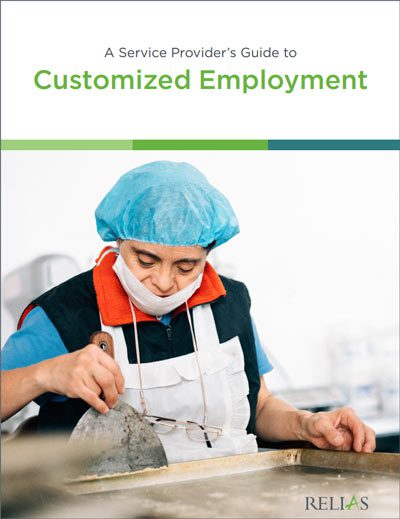According to the National Council on Disability, people with disabilities live in poverty at more than twice the rate of people without disabilities, and people with disabilities make up more than half of those in America living in long-term poverty. Why do those with disabilities struggle with poverty more? And how can we, as human services professionals, help?
The connections between poverty and disability
Poverty is both a cause and a consequence of disability. People who live in poverty are more likely to be exposed to environmental pollutants, unsafe conditions and adverse childhood experiences, and they are less likely to have access to needed healthcare, all of which can result in disability.
Despite federal protections from the Americans with Disabilities Act, people with disabilities—including physical disabilities, intellectual disabilities and mental illness—have much higher unemployment rates than the general population. Data from Cornell University’s Disability Statistics website shows that the national employment rate of working-age adults with a disability is only 37%.
Poverty and Employment Data from the American Community Survey 2017
(retrieved from disabilitystatistics.org)*
| Type of Disability | Employment Rate of Working-Age Adults | Poverty Rate of Working-Age Adults |
| Visual Disability (blind or serious difficulty seeing even with glasses) | 44.2% | 27.0% |
| Hearing Disability (deaf or serious difficulty hearing) | 53.4% | 19.8% |
| Ambulatory Disability (serious difficulty walking or climbing stairs) | 25.4% | 29.1% |
| Cognitive Disability (serious difficulty concentrating, remembering or making decisions due to physical, mental or emotional condition) | 27.9% | 31.5% |
| Self-Care Disability (difficulty dressing or bathing) | 16.3% | 31.1% |
| Independent Living Disability (difficulty doing errands alone because of physical, mental or emotional condition) | 17.8% | 31.0% |
| Total US Population | 74.9% | 12.0% |
* Does not include adults living in institutions
In 2014, the United States Senate’s Committee on Health, Education, Labor and Pensions published a report, Fulfilling the Promise: Overcoming Persistent Barriers to Economic Self-Sufficiency for People with Disabilities. The report offered numerous recommendations related to publicly funded programs and supports. It also called for changes in how the public thinks about people with disabilities.
“The general public, workers in programs designed to support people with disabilities, and employers and potential colleagues without disabilities all need to be aware of the skills, knowledge, and abilities of people with disabilities… Individuals with disabilities must be treated with the respect and the same high expectations we afford those without disabilities.”
Clearly, creating employment opportunities for people with disabilities is an essential part of reducing the poverty rate in this population. That involves helping business leaders recognize the benefits of employing individuals with disabilities. A 2018 study from American Association of People with Disabilities and Disability:IN found companies that employed people with disabilities outperformed other companies—fueling better profitability and shareholder earnings.
Customized employment
A second critical part of increasing job opportunities among people with disabilities, and thus fighting poverty, is the development and expansion of customized employment programs. Customized employment individualizes the employment process completely by focusing on the job seeker’s unique skills, ambitions and personality. These programs offer individuals with disabilities the opportunity to receive paid employment in an integrated setting while showcasing their talents and abilities.
For service providers, customized employment uses an evidence-based, customized strategy to introduce new ways to reduce the unemployment rates of adults with IDD. The beauty of customized employment is that it enables the candidate’s interests, preferences and talents to drive the process, not the labor market, and it works in any community setting—urban, suburban or rural.

Free E-Book: A Service Provider’s Guide to Customized Employment
Customized employment can fill the gaps left by supported and sheltered employment. Learn how to develop new job opportunities for the people you serve.
Download the E-Book →





